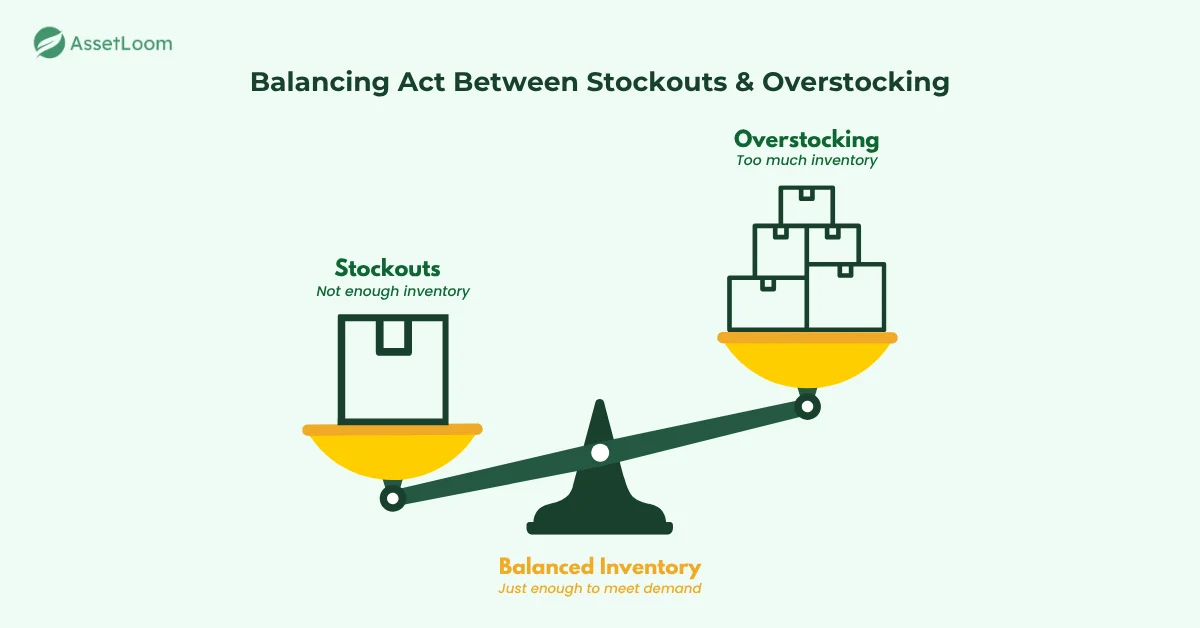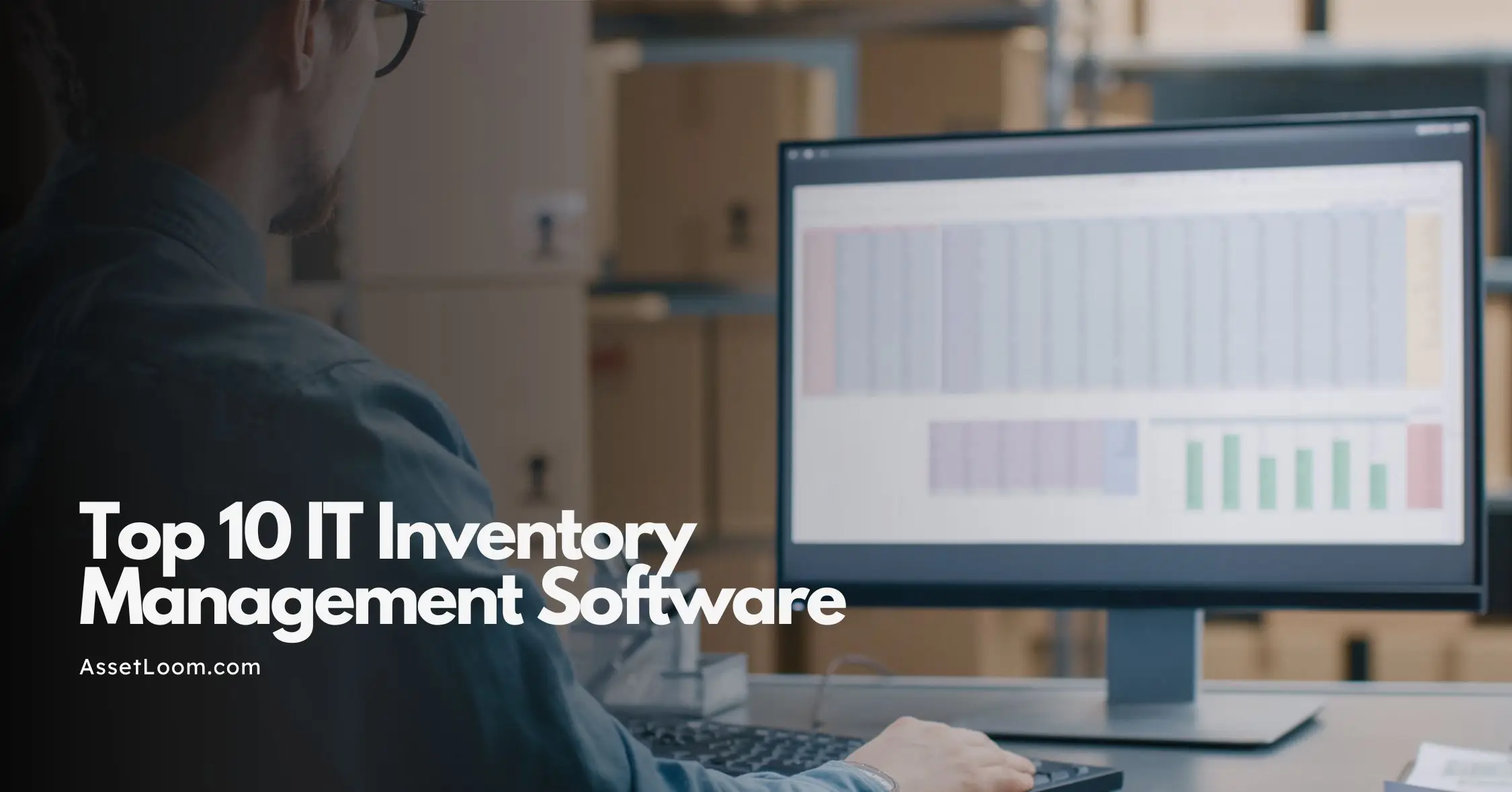Revolutionize Manufacturing: Conquering Inventory Management Challenges
Discover actionable strategies to tackle common inventory management challenges in manufacturing, optimize processes, and improve efficiency.
For manufacturers, inventory management isn’t just a back-office task – it’s the backbone of smooth operations. But managing stock, materials, and parts effectively is no small feat. With unpredictable demand, shifting supply chain dynamics, and limited visibility into stock levels, inventory problems can sneak up quickly and disrupt production.
This blog will walk you through the biggest inventory management challenges faced in manufacturing, and more importantly, give you practical, easy-to-apply solutions to overcome them. Whether you're looking to reduce costs, speed up your processes, or simply gain better control over your stock, we’ve got you covered with tips that can make a real difference.
Breaking Down Specific Inventory Management Challenges
Inventory management is critical to the smooth running of any manufacturing business. Yet, even with careful planning, there are challenges that arise time and time again, causing headaches, delays, and added costs. Understanding these challenges and implementing effective solutions can make all the difference. In this section, we’ll dive into the most common inventory management issues manufacturers face and outline how to tackle them efficiently.
1. Stockouts and Overstocking
The Challenge:
Stockouts and overstocking are two sides of the same coin. Both can severely disrupt your manufacturing process. Stockouts happen when there isn’t enough inventory to meet production needs, causing delays, missed orders, and unhappy customers. On the other hand, overstocking ties up your cash flow in excess inventory, creates storage issues, and increases carrying costs.
Why It Happens:
Stockouts typically occur when demand is higher than expected or when inventory replenishment isn’t timely. Overstocking occurs when demand is misjudged or production forecasts are off, leading to excessive stock on hand.
How to Tackle It:
- Automated Reordering Systems: Implement systems that automatically reorder stock when inventory hits a certain threshold. This ensures you’re never too low or too high on essential materials.
- Demand Forecasting Tools: Leverage historical sales data, market trends, and seasonal shifts to predict future inventory needs accurately. Software that analyzes past inventory usage can help make more informed purchasing decisions.
- Just-in-Time (JIT) Inventory: This strategy focuses on keeping stock levels as low as possible while still ensuring you have enough to meet demand. With JIT, materials arrive just in time for production, reducing storage costs and minimizing overstock.
By implementing these strategies, manufacturers can reduce the risks of both stockouts and overstocking, keeping inventory lean while ensuring production stays on track.
2. Difficulty in Tracking Work-in-Progress (WIP)
The Challenge:
In many manufacturing processes, Work-in-Progress (WIP) inventory is often neglected. Materials or components that are in the middle of production may get misplaced, causing delays, confusion, or production errors. Without visibility, it’s challenging to track where things are in the manufacturing process and identify any bottlenecks.
Why It Happens:
WIP tracking is usually an afterthought because manufacturers focus on finished goods and raw materials. But in a fast-moving production environment, WIP inventory is constantly shifting, making it harder to monitor.
How to Tackle It:
- RFID and Barcode Tracking: Using RFID tags or barcodes on all materials and components allows manufacturers to track items as they move through the production process. This real-time data helps identify where things are and ensures that materials don’t get misplaced.
- Visual Management Tools: Tools like Kanban boards or digital dashboards provide clear, visual updates on the status of WIP items. These systems allow workers to see exactly what is in progress, what needs attention, and what’s ready for the next stage.
- Integrated Software: Implementing an integrated ERP or MES (Manufacturing Execution Systems) helps connect the various stages of production, giving you a comprehensive view of where every item is in the process.
By putting these tools and strategies in place, manufacturers can reduce errors, improve production flow, and minimize the chances of WIP items getting lost in the shuffle.
3. Supply Chain Disruptions
The Challenge:
Supply chain disruptions are a major headache in today’s interconnected world. From delays in raw material shipments to global supply chain issues, manufacturers face uncertainty in receiving critical materials on time. These disruptions can halt production, delay deliveries, and ultimately affect customer satisfaction.
Why It Happens:
Supply chain disruptions can occur for a variety of reasons: natural disasters, geopolitical tensions, transportation bottlenecks, or supplier issues. In an increasingly globalized world, the risk of disruption is higher than ever.
How to Tackle It:
- Diversify Your Supplier Base: Relying on a single supplier for key components or materials can be risky. By diversifying suppliers, you reduce the chances of being severely impacted by any one disruption. Look for reliable alternatives to mitigate risk.
- Real-Time Inventory Management Systems: Using real-time inventory tracking systems allows you to stay updated on order statuses and anticipate any delays before they affect production. If there’s an issue with one supplier, you can quickly pivot to an alternative source.
- Build Strong Relationships with Suppliers: Establishing strong, reliable relationships with your suppliers can help prioritize your orders during disruptions. Communication is key; stay in touch with your suppliers to stay ahead of potential delays.
- Safety Stock: Maintaining a small buffer of “safety stock” for critical items can help you weather minor disruptions without grinding your operations to a halt.
These strategies help create a more resilient supply chain, ensuring that your production processes aren’t derailed by unexpected disruptions.
Tackling these common inventory management challenges requires a combination of the right technology, strategies, and proactive planning. By automating reorder processes, enhancing visibility through tracking systems, and building strong, diverse supplier relationships, manufacturers can create a more efficient and resilient inventory system that minimizes downtime and maximizes profitability.
Implementing these solutions will not only streamline your operations but also give you greater control over your manufacturing process, keeping you ahead of the competition.
Actionable Steps to Tackle These Challenges
Now that we've explored the common inventory management challenges manufacturers face, it’s time to take action. Tackling these problems requires not just understanding them, but also putting strategies into practice that will streamline your operations and boost efficiency. Let’s break down the practical steps you can start implementing immediately to overcome stockouts, overstocking, WIP tracking issues, and supply chain disruptions.
1. Prevent Stockouts and Overstocking
To avoid stockouts and overstocking, it’s essential to maintain a delicate balance in your inventory management. The first step is to automate your reordering system. Modern inventory management software can automatically reorder materials as soon as they hit a predefined minimum threshold. This ensures you never run out of critical stock without constantly monitoring inventory levels.
Next, you should leverage demand forecasting tools to help predict your future inventory needs. By analyzing historical data, market trends, and seasonal fluctuations, these tools allow you to order materials in line with actual demand, reducing the risk of stockouts and excessive stock.
Finally, consider adopting a Just-in-Time (JIT) inventory system. This method involves synchronizing your material orders so that materials arrive exactly when they’re needed for production. JIT minimizes storage costs and reduces the chances of overstocking, allowing you to keep cash flow fluid without losing the ability to meet production needs.

2. Track Work-in-Progress (WIP) Efficiently
One of the most challenging aspects of inventory management in manufacturing is tracking Work-in-Progress (WIP). Without proper visibility, components can get lost or misplaced, leading to costly delays. The key here is to integrate RFID or barcode inventory tracking systems into your workflow. This allows you to track materials and components as they move through the production process in real time, ensuring that nothing gets left behind or lost.
To make this tracking even more efficient, you should implement visual management systems such as digital Kanban boards or dashboards. These tools give your team a clear visual representation of where each part of the production is in the process. They help identify bottlenecks quickly and ensure that everyone is aligned on what needs attention.
Finally, it’s important to integrate your production tracking software with your overall inventory system. By linking ERP or MES (Manufacturing Execution Systems) software, you’ll get a comprehensive view of your production flow, which connects WIP inventory with raw materials and finished goods. This provides more precise data for forecasting and reduces the mismanagement of materials during production.
3. Minimize the Impact of Supply Chain Disruptions
Supply chain disruptions can bring your entire operation to a halt. To minimize their impact, diversify your supplier base. By having multiple suppliers for the same raw materials or components, you reduce the risk of relying too heavily on one source. This gives you flexibility if one supplier faces delays or other issues, helping you maintain a steady flow of materials.
Another important step is to use real-time inventory and order tracking. With modern tracking systems, you can monitor the status of your orders at any given time. Real-time updates give you the ability to anticipate delays early and take proactive steps to mitigate them, such as reordering materials or finding alternative suppliers on short notice.
Building strong relationships with your suppliers is also crucial. When suppliers know you rely on them and communicate regularly, they’re more likely to prioritize your orders, especially during peak times or disruptions. A good relationship can also help you negotiate better terms, ensuring you get the materials you need at the right time.
Lastly, consider maintaining safety stock for critical materials. While keeping inventory levels lean is important, it’s a good idea to have a small buffer of key components, especially those that are difficult to source or have long lead times. This safety stock acts as a cushion during minor disruptions, allowing you to continue production without delays.
By putting these strategies into action, you’ll start seeing improvements in your inventory management. Now, let’s dive into how to measure success and ensure these improvements are sustainable over time.
Leveraging Technology to Improve Inventory Management
Relying on outdated inventory management methods can hold your manufacturing process back. Today’s technology offers powerful tools to make your system more efficient, accurate, and responsive. Let’s take a look at how to leverage technology for better inventory management.
Data-Driven Decision Making
Using data to guide your decisions is one of the smartest ways to manage inventory. By analyzing past sales and production trends, you can predict future demand more accurately and adjust your inventory levels accordingly. This helps prevent stockouts and overstocking. With the right tools, you can make more informed decisions about when and how much to reorder, keeping your operations running smoothly.
IoT and RFID Integration
IoT (Internet of Things) and RFID (Radio Frequency Identification) technologies give you real-time visibility into your inventory. RFID tags help you track items as they move through your warehouse, ensuring you always know where everything is. IoT sensors take it a step further by monitoring conditions like temperature and humidity, which is especially useful for sensitive materials. With these technologies, you can avoid stock discrepancies and reduce delays.

Automation Tools
Automating routine inventory tasks can save time and reduce errors. Automated systems can handle stock counting, reordering, and tracking without manual input. This ensures that your inventory records are always accurate, without the need for constant monitoring. If you’re not already using the best inventory management software, upgrading to one with these automation features can greatly enhance your efficiency and accuracy.
By integrating data analysis, IoT, RFID, and automation into your inventory management, you can streamline operations, reduce errors, and improve decision-making. These technologies make it easier to manage inventory, boost efficiency, and keep production running smoothly.
Implementing Continuous Improvement in Inventory Management
Inventory management isn’t a “set it and forget it” process. To maintain efficiency and adapt to changing demands, continuous improvement is crucial. This involves regularly reviewing your system, using data to guide decisions, and making adjustments based on feedback. Here’s how you can implement a continuous improvement approach to keep your inventory management system running at its best.
1. Regularly Monitor Key Performance Indicators (KPIs)
The first step in continuous improvement is tracking key performance indicators (KPIs). These metrics allow you to measure how well your inventory system is working and identify areas that need improvement. Some essential KPIs to track include:
- Inventory turnover rate: Measures how quickly your inventory sells and is replaced. A higher turnover rate generally indicates efficient inventory management.
- Stockout frequency: Tracks how often stockouts occur. Frequent stockouts may signal issues with demand forecasting or replenishment processes.
- Order accuracy: Measures how often orders are picked, packed, and shipped correctly. High accuracy ensures customer satisfaction and reduces returns.
By monitoring these KPIs, you can quickly identify inefficiencies and make adjustments, ensuring your inventory system remains aligned with production and demand.
2. Create a Culture of Feedback and Adaptation
Your team members are the ones who interact with inventory on a daily basis, making their feedback invaluable. Encourage a culture of continuous improvement by regularly gathering input from employees in the warehouse, procurement, and sales teams. Their first-hand experience with the system can reveal bottlenecks, challenges, or opportunities for improvement that you may not be aware of.
Creating a feedback loop helps you stay ahead of any issues and adjust your processes before small inefficiencies grow into bigger problems. Regularly discuss improvements with your team and implement their suggestions where feasible. This will ensure your inventory system evolves with the changing demands of your business.
3. Conduct Regular Audits and Reviews
Periodic audits are essential for ensuring accuracy and efficiency in inventory management. Regular reviews help identify discrepancies between your physical inventory and system records, spot trends, and ensure that processes are running smoothly.
By conducting audits consistently (not just at year-end), you’ll be able to catch issues early, adjust forecasts, and fine-tune your inventory management system. This proactive approach allows you to maintain control over your inventory and make informed decisions that keep your operations running smoothly.
Putting It All Together
The key to effective inventory management is continuous improvement. By regularly monitoring KPIs, encouraging feedback, and conducting audits, you can refine your inventory system and keep it adaptable to changing market conditions. These practices will help you stay on top of inefficiencies and ensure that your system remains reliable and efficient for the long term.
Next Steps for Manufacturers
Effective inventory management is an ongoing process. By implementing the strategies outlined, such as leveraging technology, tracking key metrics, and continuously improving, you can create a more efficient system.
Start by evaluating your current system, identifying areas for improvement, and applying small changes. Whether it’s automating reorders or integrating real-time tracking, the key is to adapt and measure success over time to keep your system aligned with your business needs.

Related Blogs
Subscribe for Expert Tips and Updates
Receive the latest news from AssetLoom, right in your inbox.

